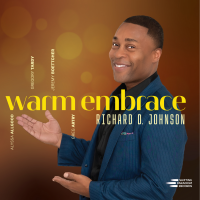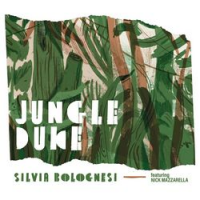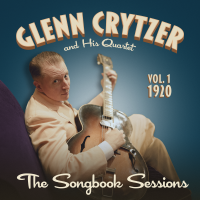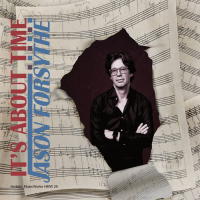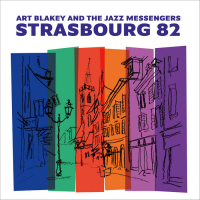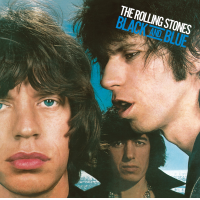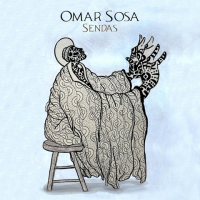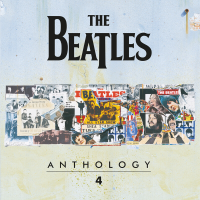Home » Jazz Articles » Multiple Reviews » Brubeck: The Quintessence (1948-1959) ; Take Five; QSF P...
Brubeck: The Quintessence (1948-1959) ; Take Five; QSF Plays Brubeck; 1975: The Duets & Jazz at Oberlin
 | 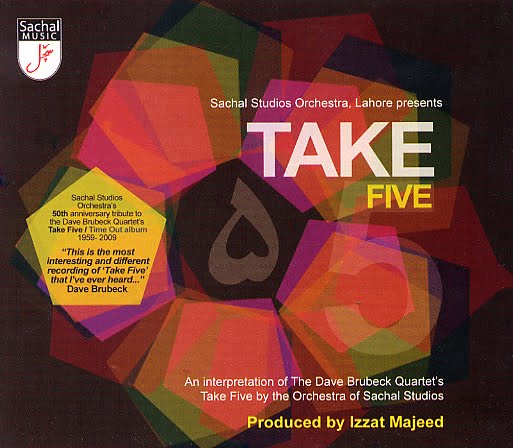 |  |  |  |
Dave Brubeck/Paul Desmond The Quintessence (1948-1959) Fremeaux & Associes. 2009 | Sachal Studios Orchestra Take Five Sachal Music 2009 | Quartet San Francisco QSF Plays Brubeck ViolinJazz 2009 | Dave Brubeck/Paul Desmond 1975: The Duets A&M-Verve 2009 | Dave Brubeck Quartet Jazz at Oberlin Fantasy/OJC-Concord 2009 |
Hail, Brubeck! Most recently David Warren (Dave) Brubeck added Kennedy Center Honors to the acclamation he has received for his contributions as composer, performer and humanitarian. Nearing 90, he is one of the last surviving masters of a seminal era in jazz. He remains as active as ever as composer and performer in jazz, classical and sacred music while continuing to prove that creative jazz and popular success can coexist.
The Quintessence is subtitled "The Unpredictable Alliance Between the Loner and the One They Couldn't Classify." This double-disc collection of Brubeck and saxophonist Paul Desmond's performances together and apart, from 1948-1959 in San Francisco, New York and Los Angeles, offers a rare opportunity to hear a rare mix of early explorations in live solo and group performances. For instance the opener, a 1948 take on "How High the Moon" by the Brubeck Octet, has Desmond's alto saxophone sounding not nearly as quite as liquid as it would in the future. We also get a taste of Cal Tjader's drumming, although he would soon depart the group. A 1953 go at that same tune finds Brubeck noodling in bits of "Ain't She Sweet" and already evincing the innovative time signatures for which he was already becoming famous. This collection is a tasty mix as the pair roam with various groups from standard rep to such classics as Brubeck's "In Your Own Sweet Way" and Desmond's "Take Five."
Clearly Brubeck's mega-hit "Take Five" has become a part of the universal musical language, traveling as far as the Sachal Studios Orchestra of India. Their energy level is astounding on this salute to the 50th Anniversary of the Time Out album as well to bossa classics. The orchestra's version of "The Girl From Ipanema" starts surprisingly in a burst of high speed from violins before gradually slowing and shifting the mood with some tangy accordion and guitar. The use of traditional instruments such as Tanvir Hussain's sarod and Nafis Khan's sitar, backed by a pulsating string section, have a total ear-opening effect. They create something that is as much a celebration of traditional Indian music and instrumentation as it is of a jazz classic.
The Quartet San Francisco's Plays Brubeck offers more freshness to be found in the oeuvre. With the exception of "Take Five," all the tunes on this set are Brubeck's own. The arrangement of "The Duke" by cellist Matt Brubeck (the pianist's youngest son) is typical of the lighthearted merriment evident on a set that often has the feel of an updated classical minuet while "Three to Get Ready" has a kind of loopy and totally beguiling waltz ambience. Dominated by violins (Jeremy Cohen and Alisa Rose) and viola (Keith Lawrence), "Take Five" is a lively if statelier waltz. "Blue Rondo a La Turk" has an agreeable urgency, the tempo building without ever becoming strident and interspersed with mellow oases.
These enjoyable diversions only add to the pleasure of rediscovering 1975: The Duets. As great as some of their groups proved to be in the years they played together, these later duets between Brubeck and Desmond are something special. The mix of the pianist's creative time signatures and inclination to heavy chords with the saxophonist's glowing tone and melodic ease yielded what became a favorite recording of both. The poetic "Koto Song" is an example of their special magic together. It begins with both dropping in random sounds, creating an air of mystery, until they seemingly wander into the melody. They similarly take their time finding their way to the heart of "These Foolish Things," Brubeck leading in quietly with a piece of the familiar tune and Desmond riffing off of it gently. It's call and response that's quiet, musing as they intuitively pick up what the other is putting out. The final tune is a live performance of "You Go To My Head," which was the original inspiration for the album. Again Brubeck states the melody and Desmond restates it as Brubeck supports him softly. The rising and falling sounds, gentle tempo, unhurried and unexpected inflections with easygoing solos all speak of a profound level of emotional communication.
As essential in the Brubeck canon as The Duets is Brubeck's 1953, self-taped breakthrough album, Jazz at Oberlin. The roughness of his thunderous chords spilling over and building harmonically as Desmond picks up the melody of "These Foolish Things" is early evidence of how perfectly they complemented each other. Exuding high energy, their simultaneous improvising at breakneck pace completely detonates "Perdido." Brubeck's playing evolved into something more nuanced in later years, but here it's his raw energy that repeatedly evokes roars and applause throughout. (At the time it was another Brubeck innovation to bring live jazz to a college audience setting.) Desmond's riffing on "Stardust" is especially gorgeous as Brubeck simmers down, albeit while exploring odd time signatures. Those, such as five, seven or nine beats per bar, were to become an enduring musical signature. On "The Way You Look Tonight," Desmond's swinging inventiveness provides the launching pad from which Brubeck gets into myriad changes that may leave you breathless. Of this seminal album Brubeck simply said, "I like this recording and so did Paul." You will too.
Tracks and Personnel
The Quintessence (1948-1959)
Tracks: Disc One How High the Moon; Blue Moon; Let's Fall In Love; Over the Rainbow; You Go To My Head; My Heart Stood Still; How High the Moon; All the Things You Are; Laura; Stardust; Balcony Rock; Jeruvian; How High the Moon; Blue Moon; Let's Fall in Love; Over the Rainbow; You Go to My Head; My Heart Stood Still; How High The Moon; All the Things You Are; Stardust; Balcony Rock; Jeruvian. Disc Two Misty Window; Audrey; Look For the Silver Lining; When I Was Young; In Your Own Sweet Way; Chorale; Wintersong; Line For Lyons; The Duke; Three to Get Ready; Take Five; Blue Rondo a la Turk; You Go To My Head; Greensleeves; Misty Window; Audrey; Look For the Silver Lining; When I Was Young; In Your Own Sweet Way; Chorale; Wintersong; Line for Lyons; The Duke; Three to Get Ready; Take Five; Blue Rondo a la Turk; You Go to My Head; Greensleeves.
Personnel: Dave Brubeck: piano; Paul Desmond: alto saxophone Various combinations including Dave Brubeck Octet, Dave Brubeck Trio, Dave Brubeck Quartet, Dave Brubeck piano solo, Paul Desmond Quintet, Mulligan Desmond Quartet, Paul Desmond Quartet.
Take Five
Tracks: Take Five; Desafinado; Mountain Dance; Gorate de Impanema; Misty; Samba de Verao; This Guy's in Love With You; Gorate de Impanema (raga).
Personnel: Sachal Studios Orchestra, Lahore.
QSF Plays Brubeck
Tracks: Three To Get Ready; Strange Meadowlark; The Golden Horn; The Duke; Take Five; Kathy's Waltz; Blue Rondo a la Turk; Bluette; Unsquare Dance; It's a Raggy Waltz; Forty Days; What Child is This?.
Personnel: Jeremy Cohen: violin; Alisa Rose: violin; Keith Lawrence: viola; Michelle Djokic: cello.
1975: The Duets
Tracks: Alice in Wonderland; These Foolish Things; Blue Moon; Stardust; Koto Song; Balcony Rock; Summer Song; You Go To My Head.
Personnel: Dave Brubeck: piano; Paul Desmond: alto saxophone.
Jazz at Oberlin
Tracks: These Foolish Things; Perdido; Stardust; The Way You Look Tonight; How High The Moon.
Personnel: Dave Brubeck: piano; Paul Desmond: alto saxophone; Ron Crotty: bass; Lloyd Davis: drums.
Tags
PREVIOUS / NEXT
Support All About Jazz
 All About Jazz has been a pillar of jazz since 1995, championing it as an art form and, more importantly, supporting the musicians who make it. Our enduring commitment has made "AAJ" one of the most culturally important websites of its kind, read by hundreds of thousands of fans, musicians and industry figures every month.
All About Jazz has been a pillar of jazz since 1995, championing it as an art form and, more importantly, supporting the musicians who make it. Our enduring commitment has made "AAJ" one of the most culturally important websites of its kind, read by hundreds of thousands of fans, musicians and industry figures every month.














